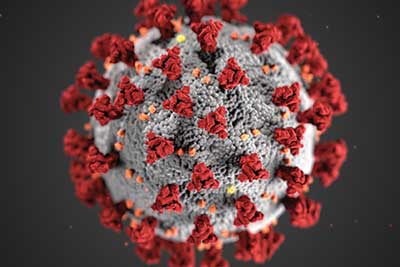How to Know if You Kidney Is Bleeding
Kidney (renal) trauma is when a kidney is injured by an outside force.
Your kidneys are guarded past your dorsum muscles and rib cage. Merely injuries can happen equally a result of blunt trauma or penetrating trauma.
- Edgeless trauma – harm caused by impact from an object that doesn't suspension the pare.
- Penetrating trauma – damage acquired by an object that pierces the pare and enters the trunk.
Any type of trauma to the kidney might go on it from working well. It'due south important to learn about damage to your kidneys and get immediate care if yous need it.
What Happens Under Normal Weather?
Meet More See Less
The urinary tract is the body's drainage system. It includes two kidneys, two ureters, a bladder, and a urethra.
Healthy kidneys piece of work day and night to clean our claret. These two bean-shaped organs are found most the heart of the back, just below the ribs. Ane kidney sits on each side of the spine.
Our kidneys are our body's main filter. They clean nigh 150 quarts of blood daily. Every day, they form about 1-ii quarts of urine by pulling extra h2o and waste from the claret. Urine ordinarily travels from the kidneys down to the bladder and out through the urethra.
Equally a filter, the kidney controls many things to go along u.s. healthy:
- Fluid residuum
- Electrolyte levels (due east.yard., sodium, potassium, calcium, magnesium, acid)
- Waste removal in the course of urine
- The regulation of blood pressure level and red blood jail cell counts
When the kidneys are damaged, they may not function well. In most cases, some damage won't cause too many problems. Just, major damage may require more than handling, similar dialysis.
Kidney (renal) trauma is when the kidney is hurt by an outside force. There are two types of trauma Blunt and Penetrating Trauma.
Edgeless Trauma
The best sign of blunt kidney injury is blood in the urine (" hematuria"). Sometimes the blood tin can be seen with the naked heart. Other times, it tin can only be seen through a microscope.
Blunt trauma kidney injuries may show no outside signs. Or bruises may exist seen over the back or abdomen where the kidneys are.
Penetrating Trauma
Penetrating kidney trauma may be suspected when in that location'due south a wound from a pocketknife, bullet or other object that has pierced the pare. But sometimes these wounds may be pocket-sized or difficult to find. Also, sometimes the skin wound is far abroad from the kidney.
Kidney trauma tin occur every bit kidney injury lone or with other damaged organs. The kidney is the urinary tract organ nearly often injured by severe trauma.
Blunt trauma can be caused by
- Car accident (children are specially vulnerable to injury in car accidents)
- Fall
- Being striking hard by a heavy object, especially in the flanks (betwixt the rib and the hip)
- An action where the body comes to a sudden terminate after moving quickly
Penetrating trauma can be caused by
- Bullet
- Pocketknife
- Any object piercing the trunk
Kidney injury is rated on a v-grade scale based on how bad it is. Course one refers to minor injury, such as bruising. Grade 5 is the most astringent, where the kidney is shattered and cut off from its blood supply.
A simple dipstick urine test can detect microscopic hematuria.
When kidney injury is suspected, it'south vital to practice imaging studies of both kidneys. These will confirm the diagnosis and tell how bad the injury is.
Computerized Tomography
A computerized tomography (CT) scan with intravenous (IV) contrast (a special dye) is the best way to assess kidney injury. A CT scan takes many x-ray images that are put together to show "slices" of parts of the body. Injuries can exist seen more than conspicuously equally the contrast dye flows through the blood and kidney.
Ultrasound
Ultrasound tin can also exist used to diagnose kidney trauma. Ultrasound uses sound waves bouncing off structures in your body to create images. But information technology may not show the best details of the injury.
Intravenous Pyelogram
Intravenous pyelogram (IVP) uses ten-rays to show how dye moves through your urinary organization. IVP can show how the kidneys are working. The dye is injected into a vein in your arm.
Treatment depends on the condition of the patient, how bad the kidney injury is, and if there are other injuries.
If the patient is stable and there'due south no injury to other organs, the trauma might be treated without surgery. The patient will residual in the hospital until no more blood is seen in his/her urine. He/she is watched closely for bleeding and other problems. After leaving the hospital, a patient should be watched for signs of kidney damage like late bleeding or high blood pressure.
If a patient isn't stable and is losing a lot of claret from the kidney, surgery may be done. Surgery can help the doctor go a better look at the injury. The aim of surgery is to set and preserve the injured kidney. If the patient needs open surgery to repair other organs, the surgeon will check and gear up the injured kidney as well. Sometimes a kidney is too desperately injured, so it may need to be removed. Fortunately, kidneys are efficient organs and merely ane healthy kidney is needed for good health.
Today, most kidney injuries are handled without surgery. Many serious injuries tin can exist treated with minimally invasive techniques. I method is angiographic embolization. Using this method, surgeons can achieve the arteries of the kidneys through big claret vessels in the groin to stop haemorrhage.
The nearly common bug afterward treatment are leaking urine or delayed haemorrhage. These may be treated by using telescopes to reach the urinary tract ("endoscopy") or angiographic embolization. If these things fail, surgery may be needed. The kidney may need to exist taken out.
Another problem is a pus pocket ("abscess") forming around a kidney. This is treated by draining the infection with a tube placed into the abscess. Sometimes surgery is needed to drain the abscess.
Some patients become high claret pressure after major kidney trauma. This may be treated with medication, interventional radiology (including stent placement), or surgery (including removal of the kidney).
Explore Further


How to Know if You Kidney Is Bleeding
Source: https://www.urologyhealth.org/urology-a-z/k/kidney-(renal)-trauma#:~:text=The%20best%20sign%20of%20blunt,may%20show%20no%20outside%20signs.
0 Response to "How to Know if You Kidney Is Bleeding"
Post a Comment